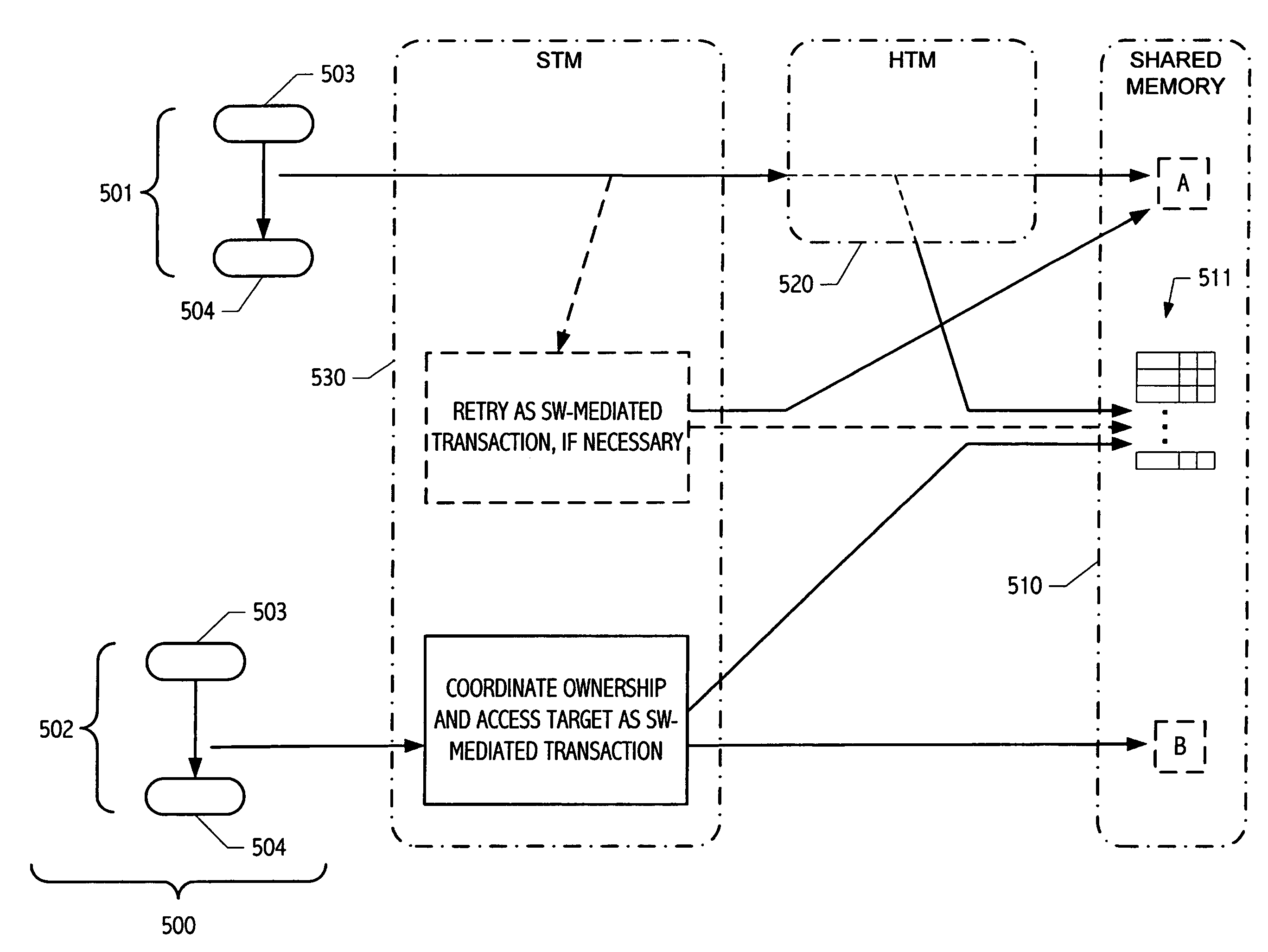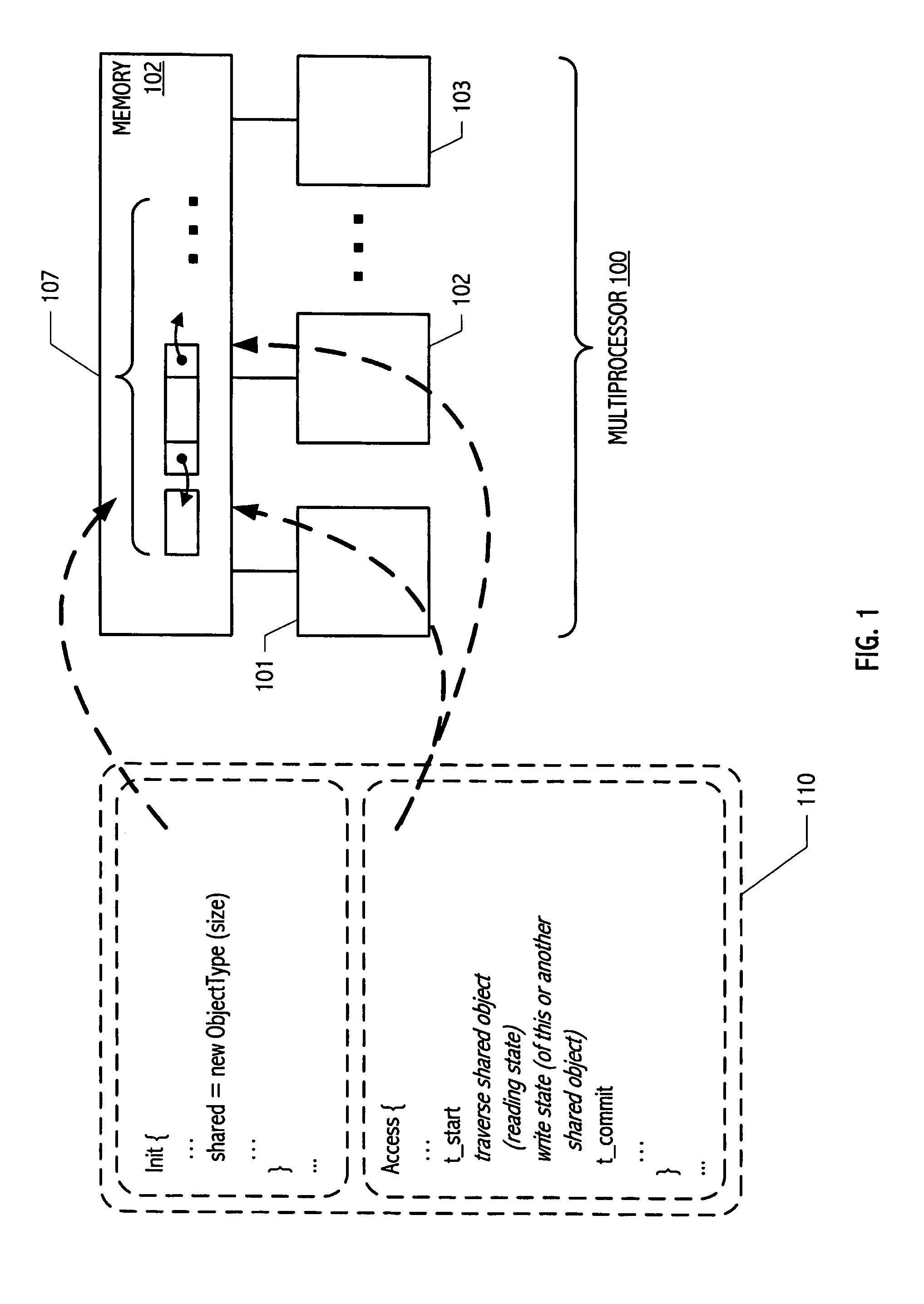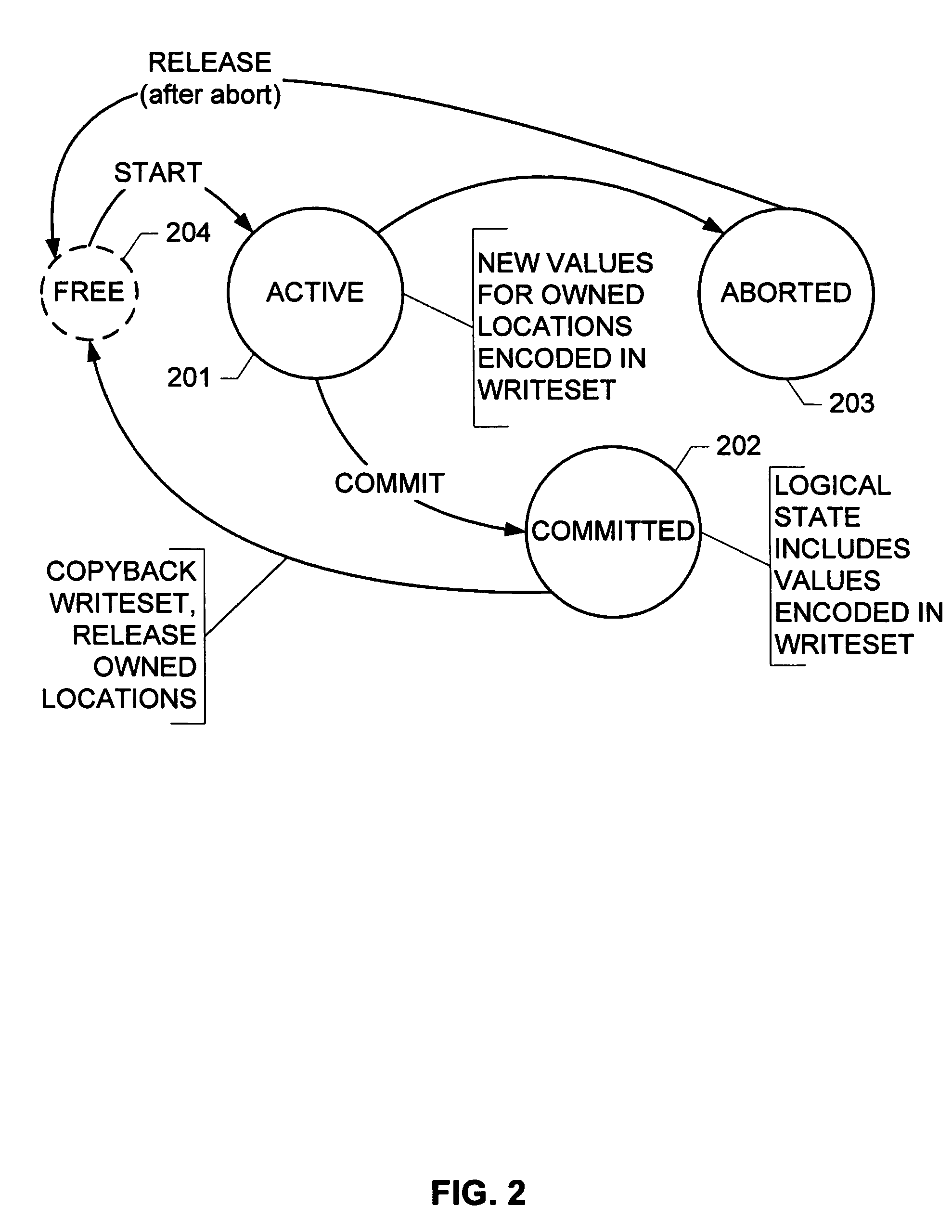Hybrid software/hardware transactional memory
a transactional memory and software technology, applied in the direction of memory adressing/allocation/relocation, multi-programming arrangements, instruments, etc., can solve the problems of affecting the performance of other threads, and causing other threads to wait, so as to facilitate coordination, facilitate the design and implementation of computational systems, and improve performance.
- Summary
- Abstract
- Description
- Claims
- Application Information
AI Technical Summary
Benefits of technology
Problems solved by technology
Method used
Image
Examples
Embodiment Construction
)
[0028]A versatile mechanism has been developed for coordinating amongst threads of a multithreaded computation that employs a transactional memory facility. We describe herein a class of transparent, dynamic software transactional memory implementations that use hardware transactional memory to improve performance if it is available, but do not depend on it. We call our techniques hybrid transactional memory (HybridTM).
[0029]In describing HybridTM implementations, we begin by defining the logical value of each transactable memory location at each point in time in terms of some broad notions such as transactions, ownership of locations, etc. Given this definition, we then give more concrete details about possible ways to represent these notions, along with STM code that implements transactions over the transactable locations (in terms of their defined logical values). We design this code such that we can integrate the STM code with concurrent hardware transactions over the same logi...
PUM
 Login to View More
Login to View More Abstract
Description
Claims
Application Information
 Login to View More
Login to View More - R&D
- Intellectual Property
- Life Sciences
- Materials
- Tech Scout
- Unparalleled Data Quality
- Higher Quality Content
- 60% Fewer Hallucinations
Browse by: Latest US Patents, China's latest patents, Technical Efficacy Thesaurus, Application Domain, Technology Topic, Popular Technical Reports.
© 2025 PatSnap. All rights reserved.Legal|Privacy policy|Modern Slavery Act Transparency Statement|Sitemap|About US| Contact US: help@patsnap.com



